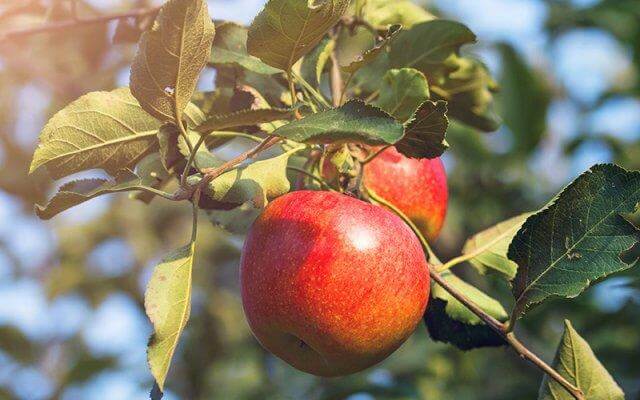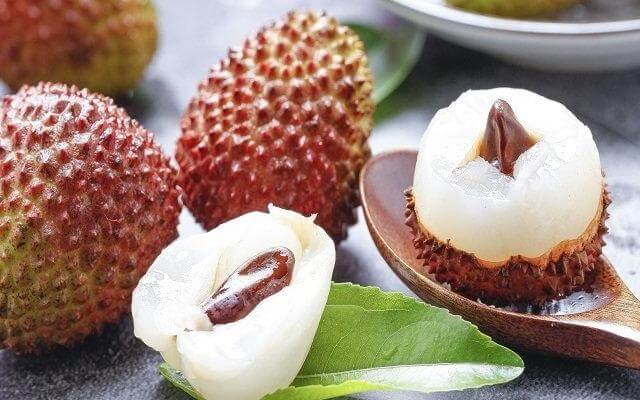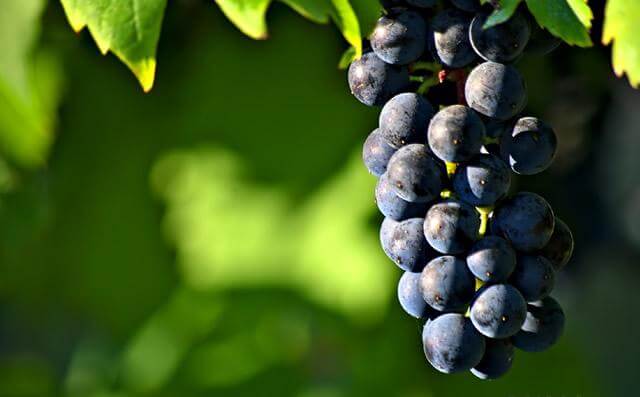Fruits contain a lot of vitamins and trace elements, and different fruits have different effects. They are indispensable foods in people’s lives. However, there are many fruit producing areas in China. Due to the different climates and land types, the areas where different fruits grow are different. This post will introduce you to the top ten fruit growing bases in China.
[lwptoc numeration=”none” title=”Top 10 Fruit Planting Bases in China” width=”full”]1. Shaanxi 陕西

Shaanxi spans three climatic zones, and its unique climatic conditions have created the famous “Shaanxi Fruit”. Apples are synonymous with the fruit industry in Shaanxi. China’s apple production accounts for 1/2 of the world’s apples, while Shaanxi’s apples account for 1/4 of China’s apples. That is to say, Shaanxi’s apples can account for 1/8 of the world’s total, and data shows Shaanxi has the largest area of fruit cultivation in the country. The planting area of apple orchards in Shaanxi exceeds 8.96 million mu, and kiwifruit exceeds 790,000 mu, which is the largest in the country; the size of cherries is second and third in the country for grapes.
2. Maoming City, Guangdong 广东茂名市
The fruit industry is the most dazzling business card in Maoming’s modern agriculture. It is not only famous all over the country and the world for its variety, high quality, and large output, but also famous at home and abroad for its long history and rich lychee culture. Located in the tropical and subtropical transition zone, Maoming is rich in high-quality fruits such as lychees, longan, bananas, and Sanhua plum. In 1996, it was named “China’s largest fruit production base” by relevant departments of the State Council. “Longan” and “High-footed Dundi Lei Banana” were successfully selected into the “China Geographical Indication Product Ceremony” (Guangdong Volume).
3. Lingshan County, Guangxi 广西灵山县

Lingshan lychees are produced in Lingshan County, Qinzhou City, Guangxi. Lingshan County is a famous hometown of lychees in China. It has a long history of planting. According to the records of Lingshan County, the cultivation of lychees began in the Tang Dynasty and the Song Dynasty has been greatly developed. As of 2008, the county’s litchi planting area was 605,000 mu, with a normal annual output of 50,000 tons and a maturity period of more than two months. There are 35 varieties of Lingshan Litchi, Feizixiao, and Heiye. Among them, Sanyuehong, Feizixiao and Heiye have the largest area and yield. Among them, Guiwei, Lingshan Xiangli, and Nuomi Ci are particularly treasures of lychee. In January 2012, the General Administration of Quality Supervision, Inspection and Quarantine of the People’s Republic of China approved the implementation of geographical indication product protection for Lingshan lychees. In May 2017, Lingshan fragrant lychees were rated as “China’s Top Ten Lychee Varieties” at the 5th China Haikou Litchi and Longan Exchange and Ordering Conference.
4. Lipu County, Guangxi 广西荔浦县
As China’s No. 1 sugary orange county, sugary orange has become a “money cow” and “rich fruit” for local farmers to get rich. Lipu has established a number of sugary orange areas. Among them, Xiuren Town and Qingshan Town are contiguously planted with more than 10,000 acres, and there are 35 contiguous areas with more than 1,000 acres, forming Yixiuren, Qingshan, Dumo, and Datang. , Shuangjiang, Chacheng and other 13 towns and towns mainly produce sugar oranges with “one village, one product” and “one village, one product” production base. Lipu Sugar Orange has formed a multi-level, three-dimensional, and full-covering marketing network including supermarkets, wholesale, monopoly, agency, and e-commerce. The products are sold throughout the country, Hong Kong, Macao and Taiwan, as well as Japan, South Korea and other countries.
5. Cengong County, Guizhou 贵州岑巩县
In recent years, the Cengong County government has issued a series of preferential policies, focusing on the Sizhou series of pomelos, peaches and plums, and supported more than a dozen fruit tree companies or professional cooperatives through the “cooperative (company) + base + farmer” operation model , Vigorously develop the fine fruit industry. As of the end of 2018, the county has built 89,000 mu of fruit bases, including 30,000 mu of grapefruit bases, 14,000 mu of peach bases, 9,000 mu of plum bases, 6,000 mu of grape bases, and fruit bases such as kiwi, dragon fruit, bayberry, and loquat. . At present, the area of orchard in production is 34,000 mu, and the annual output value is 102 million yuan.
6. Mengyin County, Shandong 山东蒙阴县
Mengyin started the establishment of a pollution-free fruit production base in 2002. The county’s pollution-free fruit production base has reached 300,000 mu, including 150,000 mu for apples and 150,000 mu for peaches. 320 administrative villages have established pollution-free fruit bases. In September 2003, Mengyin County was recognized as a pollution-free fruit production base county by the Ministry of Agriculture. At present, there are 14 organic fruit certifications in Mengyin County and more than 70 green fruit certifications. Fruit trademarks such as Mengyin, Six Sisters of Yimeng, Yimeng Red, Zhaiqianpo, Yinglihong, Menglianggu, and Mengyuan have been registered. “Yuan” brand red Fuji apples are approved to use the national green food mark, and “Mengyin” brand peaches, “Yimeng Six Sisters” brand apples, and “Yinglihong” grapes have passed the pollution-free fruit certification.
7. Tiandong, Guangxi 广西田东
Tiandong County, Guangxi was awarded the honorary title of “Hometown of Mangoes in China” certified by the Ministry of Agriculture in 1996. Known as “large natural greenhouse, large granary, large vegetable garden, large orchard”, it is the most suitable and unique natural area for growing mangoes. At present, the county’s mango planting area has reached more than 130,000 mu, with an output of more than 30,000 tons, and an output value of more than 120 million yuan. The mango varieties include Guiqimang, Purple Mango, Red Ivory, Tainong, Jinhuangmang, Kate Mango, etc. 37 A.
8. Pujiang County, Zhejiang 浙江浦江县

Pujiang has a long history of planting grapes. The earliest surviving local chronicle “Jiajing Pujiang Zhilue” Volume 3 contains a record of “grape” planting, which has been more than 500 years ago. Pujiang grape production bases are mainly distributed in the middle of the Pujiang Basin, with Huangzhai Town and Punan Street as the center and radiating to the surrounding area. The county is mainly formed with giant peaks (90%), supplemented by Jingya, Xiahei, Fujiminori, The grape industry of more than 30 high-quality varieties such as Beauty Finger. In 2019, the grape planting area has reached 67,000 mu, the annual output is expected to be 125,000 tons, and the annual output value will exceed 1.1 billion yuan. In addition, Pujiang also has a large-scale contiguous plantation of 250,000 acres of citrus, 100,000 acres of tea, and 100,000 acres of kiwifruit.
9. Aksu, Xinjiang 新疆阿克苏
Aksu apple, also known as Jiali fruit, has the characteristics of smooth and delicate surface, bright color, delicate flesh, transparent core, sweet and sweet taste, juicy and no residue, etc. It is rich in vitamin C, cellulose, pectin and so on. The ambassador of Aksu with little precipitation, long sunlight, and temperature difference is known for its sweetness and crispness. Among them, the “Bingtangxin” brand is even more popular. The core area for planting Aksu Bingtangxin apples is in the Hongqipo area of Aksu City. In 2019, the planting area of characteristic trees in Aksu has reached 4.5 million mu, and the total output of characteristic trees is expected to reach 2.44 million tons.
10. Huidong County, Sichuan 四川会东县
In 2019, Huidong County has 22 fruit varieties. It is estimated that by 2020, the county’s fruit planting area will reach 150,000 mu, with an output of 320,000 tons. In the fruit-growing townships of Huidong, various fruits are grown, such as pipa, banana, mango, sugar cane and so on. In addition, Huidong County has also built a new high-standard blueberry industrial demonstration park in Jiangzhou Town, which includes a 1,000 acres of blueberry substrate cultivation and production base and a 2,000 acres of blueberry field cultivation and production base, supporting the construction of blueberry sorting and packaging, cold chain transportation, and intensive processing. The complete industrial chain project.